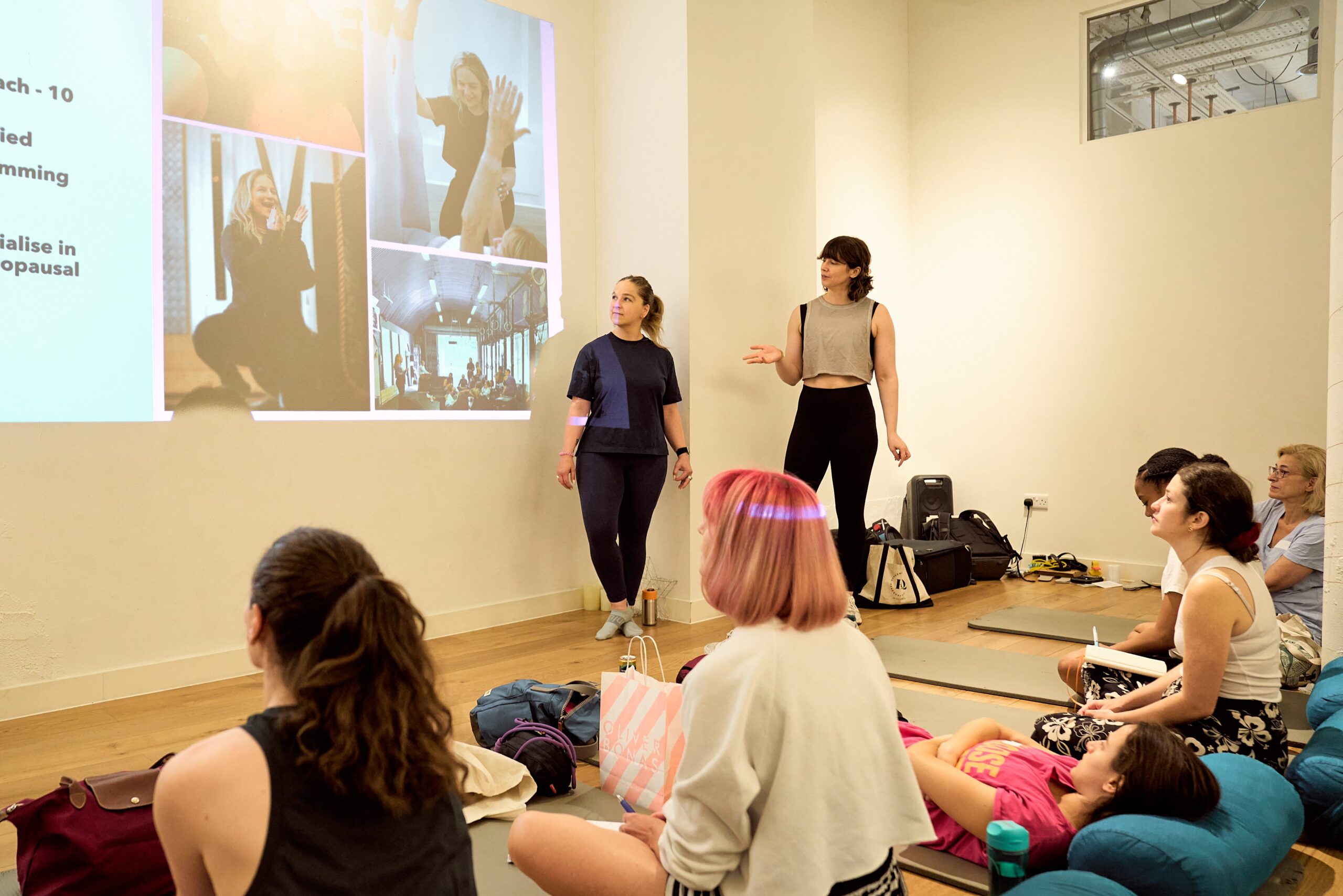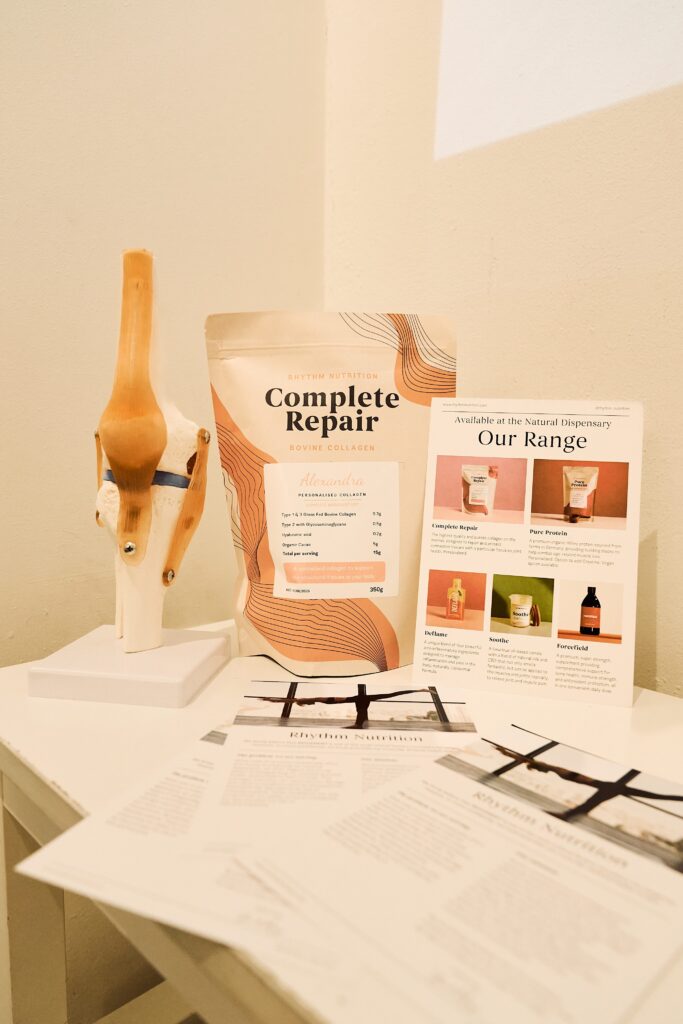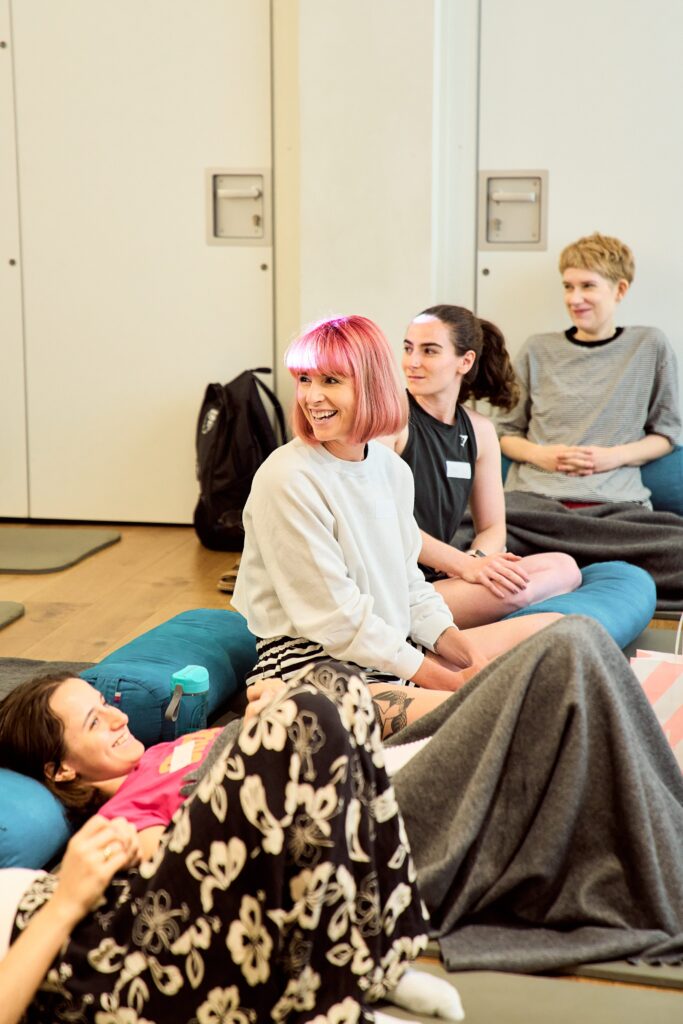Strength training when you’re hypermobile presents unique challenges that most fitness programs simply don’t address. That’s exactly why on June 21st, I was thrilled to team up with brilliant movement coach Karima Adi to host an intimate workshop in London for 18 participants focused specifically on hypermobility strength training.
If you missed this event, don’t worry – I’ll be offering a comprehensive webinar version in Autumn 2025 (exact date to be announced soon). To make sure you don’t miss out, join my mailing list here (you’ll also get my FREE Hypermobility Travel Guide).

Why Strength Training is Critical for if you’re Hypermobile
Let’s start with the big question: Why is strength training so crucial for people who are hypermobile (including conditions like Hypermobile Ehlers-Danlos Syndrome, Hypermobility Spectrum Disorder, and other hypermobility-related connective tissue disorders)?
The benefits go far beyond just building muscle. In my personal experience and through my work over the years with countless hypermobile patients, properly programmed strength training can lead to:
-
Improved gastric motility (for me and for many of my patients exercise seems to help with “IBS-type” symptoms. There isn’t much research on strength training and exercise, however positive effects have been found in studies on aerobic training.)
-
Decreased muscle and joint pain (better quality movement in joints leading to improved joint function. There are TONNES of studies on this in both people who are hypermobile as well as the general population including this one, this one, and this one)
-
More consistent energy levels (better mitochondrial function and improved resistance to fatigue)
-
Enhanced bone density (critical for preventing osteoporosis, especially in perimenopause)
- Better thermoregulation & reduced cold intolerance – One of my most life-changing benefits from strength training. Where I once felt painfully cold constantly, increased muscle mass has dramatically improved my ability to stay warm (a pattern I consistently see in my hypermobile patients too).
Medical disclaimer:
While strength training can be transformative, it’s absolutely vital to consult with a knowledgeable healthcare provider before starting any new program. What works for one hypermobile body might be dangerous for another, and there are some hypermobilty-related connective tissue disorders (including Vascular Ehlers-Danlos Syndrome) where exercise can be truly dangerous. Be safe!
Affiliate disclosure:
Hypermobility HQ Ltd is a participant in the Amazon Services LLC Associates Program, an affiliate advertising programme. As an Amazon Associate I earn from qualifying purchases at no cost to you. Please note that I also occasionally share affiliate codes from other companies I work with. As above, I earn from qualifying purchases at no cost to you and your support is appreciated!
The Unique Challenges of Hypermobile Strength Training
If you’re hypermobile, you’ve probably experienced at least a few of these frustrating scenarios:
-
The “I don’t feel anything” phenomenon – When instructors cue “engage your glutes” but you feel absolutely nothing, no matter how deep you go in a squat.
-
Mysterious pains – That weird twinge or sharp sensation that appears out of nowhere during basic movements and every healthcare professional or movement expert you’ve ever spoken with shrugs their shoulders and doesn’t know what to make of it
-
Overtraining consequences – The dreaded DOMS (delayed onset muscle soreness) that hits harder and lasts longer than for non-hypermobile people and potentially serious fatigue related to either undiagnosed underlying health issues, co-occurring conditions, or accidental overtraining
-
Dysautonomia flare-ups – When your nervous system rebels mid-workout with tachycardia, overheating, or presyncope symptoms
- Different nutritional needs – under-eating, and especially not consuming enough protein, is one of the most common issues I see when helping patients who are hypermobile with strength training. We talked all about protein powder, collagen (and the difference between a collagen deficiency and a collagen defect!), and why I actually take collagen sometimes as a general protein powder. Thank you to Rhythm Nutrition for providing us with some lovely samples of my favourite products for the day (their cacao collagen is DIVINE and I use it as a general protein powder).

During the workshop, we explored the science behind why these things happen. For instance:
Your proprioceptors (those tiny sensors that tell your brain where your joints are in space) are embedded in your connective tissue. When that connective tissue is more elastic than normal (hello, hypermobility!), those position signals get distorted.
This explains why standard cues like “push your hips back” often don’t work for us. I shared my personal story of spending years squatting way too deep because coaches kept insisting I should “feel it in my glutes” – when in reality, I felt nothing until I was practically falling through the floor (while simultaneously injuring my hips).
My Personal Strength Training Journey
This workshop marked the first time I’ve really shared my complete story with strength training. After being told by multiple physiotherapists and doctors that I should never lift weights and stick only to bodyweight exercises, I actually ended up in worse pain than before due to muscle loss and deconditioning.
It wasn’t until my early 20s, out of sheer desperation, that I walked into a local gym, picked up the lightest dumbbells available, and began the painstaking process of figuring out what worked for my hypermobile body.
This was back in the pre-social media days, which in hindsight was a blessing. Without the noise of fitness influencers and conflicting advice, I could quietly experiment and learn to distinguish between:
-
Healthy muscular fatigue (the “my muscles are doing something that isn’t pain”)
-
Warning pain (the “something’s not right” sensation)
-
Reinjury pain (the “oh no, not again” feeling)
I developed my own flexible rep schemes based on how my body felt each day – a crucial adaptation for managing my dysautonomia symptoms. Some days that meant 3 sets of 8; other days it was 5 sets of 3 with longer rests. And some days, it was literally nothing at all and just resting at home or going for a gentle walk.
While I absolutely believe in seeking expert guidance when possible, I’ve found that many professionals overcomplicate strength training for hypermobile individuals. The most effective approaches are often surprisingly simple once you understand your body’s unique needs.
What Participants Had to Say
The best part of any workshop is seeing the “aha” moments happen in real time. Here’s what some attendees shared:
- “Finally being in a room full of people who just GET IT was incredible. No explanations needed about why standard exercise cues don’t work for us.”
- “Alex and Karima balanced each other perfectly – they shared both scientific explanations and hard-won personal experience. I’ve already implemented their squat tips and finally feel my glutes working!”
- “As someone newly diagnosed with hEDS, this workshop gave me hope that I can build strength safely. The emphasis on listening to your body and making strategic decisions from what you’re feeling was game-changing for me.”
Can’t Wait for the Next Workshop? Here’s What’s Coming Up Next 👀
If you missed out on this workshop, here are three ways to stay in the loop:
-
Lower Extremity Strength Webinar – Coming September 2025 (exact date TBA)
- Upper Body Strength Workshop in London – the follow-up to the Lower Body Workshop, the Upper Body workshop focuses on your arms, chest, upper back, and neck. Keep an eye out for a date TBA in October/November 2025
-
Join my mailing list – Get first dibs on events and everything I’m up to (including the Help! I’m Hypermobile book that’s out on January 1st 2026).
-
Follow me on Instagram, TikTok, Youtube, and Spotify– For all my favourite tips, tricks, and strategies for navigating life in a hypermobile body
For those who want more personalised guidance, I offer both in-person (London) and online consultations where in addition to treating muscle and joint pain I provide tailored rehabilitative exercise guidance and strength training support for your uniquely hypermobile body.
Final Thoughts
A massive thank you to everyone who made this workshop so special – the attendees for their vulnerability and great questions, Karima for her brilliant co-teaching, and The Light Centre for hosting us so beautifully.

This is just the beginning – stay tuned for our Upper Body Strength Training Workshop later this year! In the meantime, remember: Building strength with hypermobility isn’t about pushing through pain or following arbitrary rules. It’s about learning your body’s unique needs and giving it what it needs to thrive.
Works Cited:
Severo, J.S., Silva, A.C.A.D., Santos, B.L.B.D., Reinaldo, T.S., Oliveira, A.M., Lima, R.S.P., Torres-Leal, F.L., Santos, A.A.D. and Silva, M.T.B.D. (2025) ‘Physical exercise as a therapeutic approach in gastrointestinal diseases’, Journal of Clinical Medicine, 14(5), p. 1708. doi:10.3390/jcm14051708.
Turner, M.N., Hernandez, D.O., Cade, W., Emerson, C.P., Reynolds, J.M. and Best, T.M. (2020) ‘The role of resistance training dosing on pain and physical function in individuals with knee osteoarthritis: a systematic review’, Sports Health, 12(2), pp. 200-206. doi:10.1177/1941738119887183.
Zabriskie, H.A. (2022) ‘Rationale and feasibility of resistance training in hEDS/HSD: a narrative review’, Journal of Functional Morphology and Kinesiology, 7(3), p. 61. doi:10.3390/jfmk7030061.
Porter, C., Reidy, P.T., Bhattarai, N., Sidossis, L.S. and Rasmussen, B.B. (2015) ‘Resistance exercise training alters mitochondrial function in human skeletal muscle’, Medicine & Science in Sports & Exercise, 47(9), pp. 1922-1931. doi:10.1249/MSS.0000000000000605.
Sundstrup, E., Jakobsen, M.D., Brandt, M., Jay, K., Aagaard, P. and Andersen, L.L. (2016) ‘Strength training improves fatigue resistance and self-rated health in workers with chronic pain: a randomized controlled trial’, BioMed Research International, 2016, p. 4137918. doi:10.1155/2016/4137918.
Sañudo, B., de Hoyo, M., del Pozo-Cruz, J., Carrasco, L., del Pozo-Cruz, B., Tejero, S. and Firth, E. (2017) ‘A systematic review of the exercise effect on bone health: the importance of assessing mechanical loading in perimenopausal and postmenopausal women’, Menopause, 24(10), pp. 1208-1216. doi:10.1097/GME.0000000000000872.